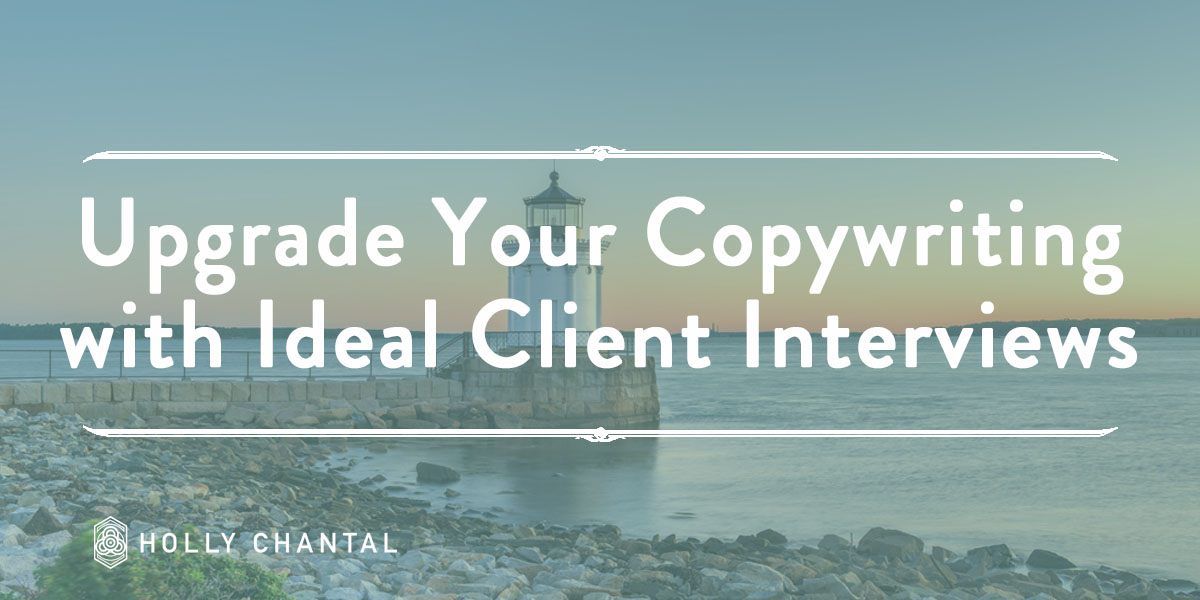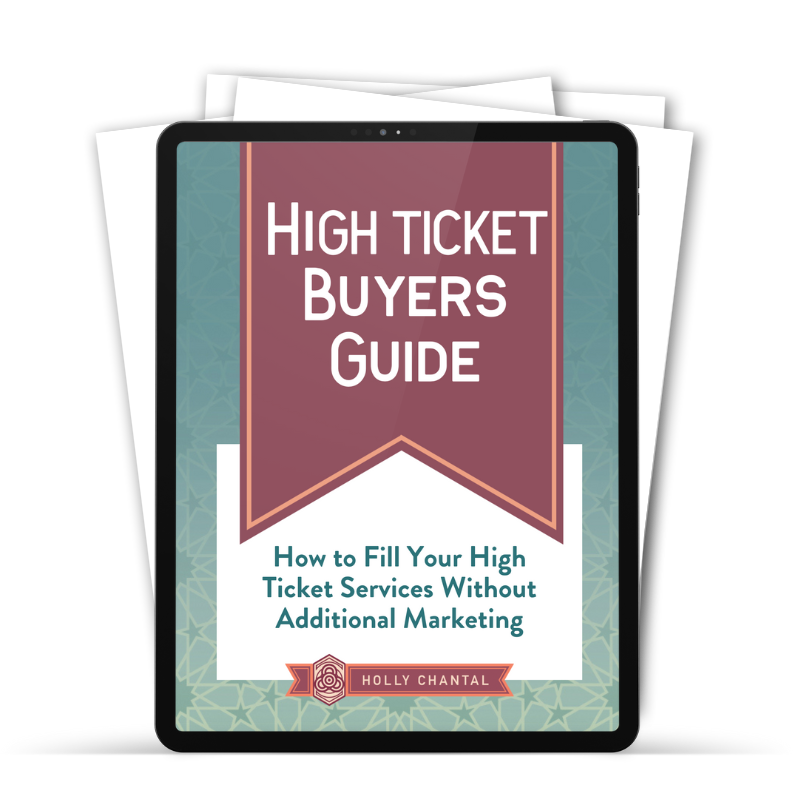There comes a point in your business where your focus isn’t just on getting clients, it’s about doing work that really excites you.
Many service professionals find at this point that while they get to be selective about who they choose to work with, they still end up with a lot of tire kickers, or non-ideal prospects.
This can waste a lot of unnecessary time, and is usually due to the fact that while the service professional has evolved, their language in their marketing has not.
If you can dial into the exact language that your ideal client is attracted to, as well as the language that will turn away those non-ideal clients you can market yourself in a way that actually filters your prospects so only the right people reach out to you.
In the Branding Game, participants are encouraged to interview their ideal client to get the right language from them versus trying to figure it out on your own.
This not only makes copywriting so much easier, it takes you and your old habits out of the equation, making it easier for you to upgrade your messaging.
So, how do you do it? Here is the process that I use to create and write the sales page for all of my offerings.
1. Find the person you’d like to interview
Once you decide what the offer is that you want to create, you find someone that you feel would be the perfect fit for the work you’d like to do. To find this person you could send an email to your list with a description of who you’re looking for, ask on social media, or even better–ask an existing client for a referral that they think would be a great fit.
The point here is not to have a sales conversation (and make that clear from the get-go), the interview is all about market research which usually makes people more open to helping, and giving most honest answers. The more you can get your interviewee to feel comfortable and open up to you the better language you will get.
2. Ask the right questions
The questions you ask are everything because with the wrong questions you’ll get generic answers or answers that aren’t necessarily helpful.
What you’re looking for is to help your interviewee open up and give you the real talk of their problem, how it’s affecting them, and what would be their perfect solution. When you can get the answers to these questions in conversational language, writing your sales page is a cinch because you can use a lot of your interview word for word.
Here are the questions that come straight from this exercise in the Branding Game:
- What are the biggest challenges you’re facing right now when ______? Or What are the biggest challenges you’re having with _____? (word this so it’s related to what YOU do)For example: What are the biggest challenges you’re facing when it comes to eating gluten free? What are the biggest challenges you’re facing when marketing your business? What are the biggest challenges you’re having with trying to keep your books up to date?… you get the idea.
- If there are multiple then ask: Which one of these affects you the most? OR Which one is the most important for you to solve? (For your sales page you’ll want to follow one train of thought, so narrowing your focus to one challenge is ideal. If they mentioned a challenge in the first question that you feel particularly passionate about you could ignore this question and choose to focus the rest of the questions on the challenge that stands out to you)
- Tell me more about how this affects you/your business? Does it affect other things/areas or is it an isolated issue?
- What have you tried before to solve this problem?
- In your experience/opinion why didn’t these solutions work? Or if they worked initially, why didn’t the results stick?
- What obstacles or disadvantages are you aware of that might be keeping you from getting better results?
- Let’s change gears – What would happen if this problem was solved? How would you feel, what other areas of your life (or business) would be affected?
- In your experience/opinion – what do you think needs to happen in order to get that result?
- How would you accomplish that/what kind of help would you need?
- Let’s say you were going to purchase a solution – what would the ideal package/solution look like?
- What outcomes or deliverables would you expect?
- What would it be worth to you to solve this problem? (not as in what would they pay, but what would the value be of solving the problem)
- Let’s say I was going to offer this exact thing – what would you need to know before you would invest?
- Is there anything else you think I should know?
3. Write your sales page
If you read any good sales page you’ll notice that they follow a similar formula. They talk about:
- The problem
- What the reader may have tried before and why that failed
- What the best solution would be
- Their offer and why it fits the bill
- The result that will happen if you take them up on their offer
This is highly simplified, but if you look at any good sales page you’ll see that it’s true. Notice how the questions in the interview follow along with this formula? Bingo! Now not only are you following a tried and true arc for writing sales copy, you’re using the ideal client’s real words for describing all of these things which makes communicating the value very easy.
4. Create the offer
Most service professionals create their offer first, which isn’t necessarily wrong but can lead to some unnecessary frustration if that offer doesn’t entirely fit what they client is looking for.
I suggest interviewing your ideal client first and then comparing notes with what you already had in mind and building the offer for the ideal client, versus creating an offer and trying to find the people that want it.
All I mean by “creating the offer” is sitting down and looking at what the client said their problem is and how it’s affecting them, then looking at what the result is that they want. Your job then is to lay out your process for taking them from point A to point B and how you will deliver it.
You might find that how your ideal client wants the program delivered may not necessarily fit how you like to work. For example, many people think they need one on one attention but if delivered properly a group or home study option could be just as effective. In this case defer to how you want to work in your business model, but address the desire of your prospect either in an FAQ format or a short diddy in the bottom of the page about why you deliver the program the way you do and why they will find it just as effective (if not more) than working with you personally.
From here you’ll have a winning offer along with a winning sales page that will go a long way to attracting clients that are right for you.




